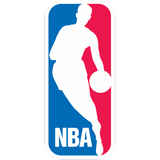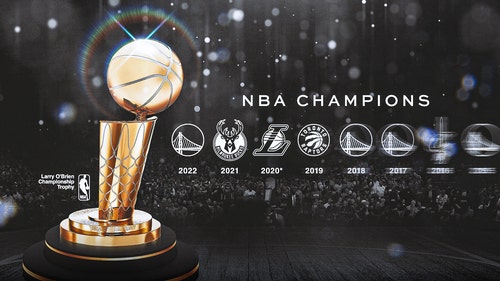
3 points: OG Anunoby's impact, Doc Rivers' remedy and the Thunder's one weakness
The NBA trade deadline has passed and the All-Star break is a few days away, which means we’ve officially reached the stretch run of the 2023-24 regular season.
Here are three trends worth monitoring over the season’s final few months.
1. The OG Effect
On Dec. 31, through 32 games, the New York Knicks were owners of the league’s 20th-best defensive rating — at the time, they were surrendering 115.5 points per 100 possessions.
From Jan. 1 through Jan. 28, their defensive rating plummeted to 108.2 points per 100 possessions, a mark better than the league-leading defensive rating of the Minnesota Timberwolves. They went 12-2 over that stretch.
In eight games since then, it’s rocketed back up to 116.0. They’re 4-4.
What was the difference in that 14-game stretch? You guessed it — OG Anunoby was on the floor.
Anyone who’s watched the Toronto Raptors play over the past few seasons knew that Anunoby was a dynamic defensive player, broad-shouldered, quick-footed, 6-foot-7 pest with a Inspector Gadget-like 7-2 wingspan. And he has the brains to go with all those physical tools. And yet, watching the way he transformed the Knicks’ defense, almost instantly, was, well, stunning.
I don’t know if Anunoby is the best defender in the NBA, but there’s not another wing out there who you can definitely say is better than he is. He can do everything on that end: lock down a dancing guard looking to attack, switch onto a big, close off passing lanes, jump into driving lanes, poke away passes and plug open holes. Just take a look at this sequence.
There might not be another player in the league who could replicate that.
With Anunoby on the floor, the Knicks have limited opponents to 98.9 points per 100 possessions, which is, frankly, a ridiculous mark. Without him, that number is 117.8.
The problem for the Knicks is that they’ve been without Anunoby since Jan. 29, and, with Anunoby having undergone surgery last week to remove a loose bone fragment in his right elbow, they’ll be without him for the foreseeable future, too. When they announced the procedure, the Knicks said Anunoby would resume basketball activities in three weeks. But surgery is surgery, so we’ll have to wait and see. Just know, though, that when he does come back, the Knicks will likely once again transform into one of the league’s top defensive units.
The Cavs have won 17 of their last 18 games and the one loss (Jan. 24 in Milwaukee) was avenged two nights later. Only five of the 17 wins have come against teams that currently have winning records, but eight have come on the road (plus another in Paris) and taking care of business against bad teams is certainly better than the alternative. They’ve had their entire starting lineup for six of their last seven games, but the lineup averaged just 10.6 minutes per game over those six, down from 13.2 per game prior to the extended absences of Darius Garland and Evan Mobley, who’ve both averaged less than 26 minutes since their returns.
Staggering has worked, as the Cavs have been ridiculously good when Donovan Mitchell and Jarrett Allen have been on the floor without Garland or Mobley (plus-21.0 points per 100 possessions in 89 minutes) and when Garland and Mobley have been on the floor without Mitchell or Allen (plus-23.9 in 61 minutes) over the five straight games when all five have been available. The defense has been particularly good (94.6 allowed per 100) in those 150 total minutes.
2. Doc’s Remedy
There were many issues that doomed now-former Bucks head coach Adrian Griffin. The most glaring of them, though, was the team’s embarrassing transition defense.
Under former head coach Mike Budenholzer, transition defense for the Bucks was a strength. Under Griffin, though, no team allowed a greater frequency of transition opportunities than the Bucks, according to the tracking website, Cleaning the Glass, with 17.3 percent of opponent possessions starting in a transition play. As a result, the Bucks were surrendering 15 fastbreak points per game, the league’s seventh-worst mark.
Upon taking over for Griffin, Rivers made a point of prioritizing the Bucks’ transition defense. So far it’s worked. Only 12.5 percent of opponents’ possessions have begun in a transition opportunity, a top-two rate. And the Bucks are holding opponents to 11.3 fastbreak points per game, a league-leading number. As a result, the Bucks are surrendering nearly four-fewer points per 100 possessions per game.
This isn’t to say things are going great since the coaching change. The Bucks are just 3-5 with Rivers on the sideline, and still not playing at the level we expected entering the season. But they did stomp the defending champion Nuggets 112-95 on Monday night, and Giannis is playing like an MVP, and the group does appear to be happier.
Give Rivers credit for seemingly already fixing the Bucks’ biggest problem.
3. OKC’s lone weakness
The Thunder are great. The Thunder are fun. This, we already know. But the Thunder also have one glaring weakness — they can’t rebound.
OKC is 28th in offensive rebounding rate and 29th in defensive rebounding rate. Part of this is by design. The Thunder like to spread the floor and play just one big, and most of the time that big is the rail-thin Chet Holmgren, who likes to park along the 3-point line. This layout is in part responsible for the Thunder’s explosive offense. All that space leads to all sorts of driving lanes.
But come playoff time an inability to rebound could prevent a fatal math problem. Rebounds lead to extra possessions, which lead to extra shots, which lead to points, which lead to wins. The Thunder don’t need to alter their makeup or start recklessly attacking the glass. But to go deep in the postseason they will need to be better on the glass.
Yaron Weitzman is an NBA writer for FOX Sports and the author of Tanking to the Top: The Philadelphia 76ers and the Most Audacious Process in the History of Professional Sports. Follow him on Twitter @YaronWeitzman.








